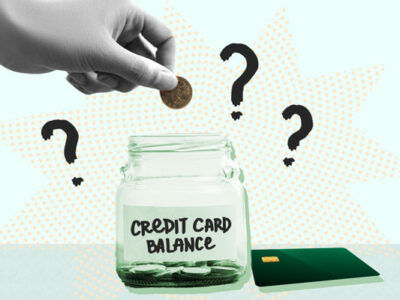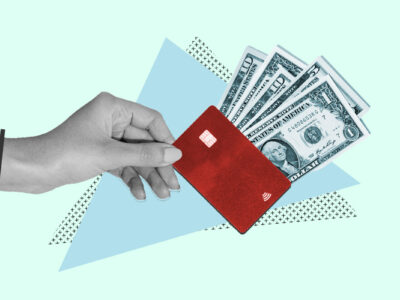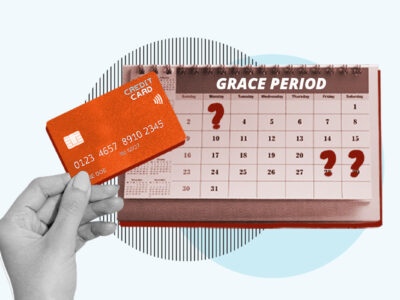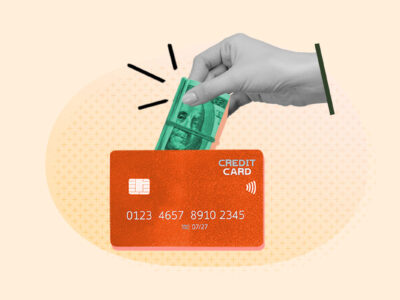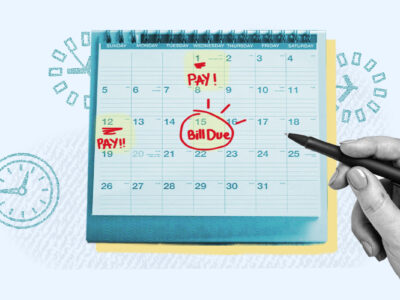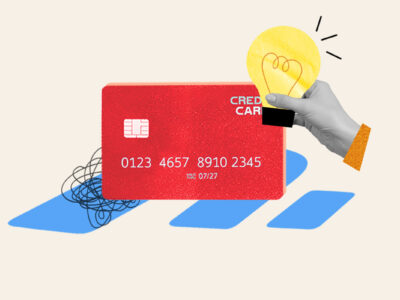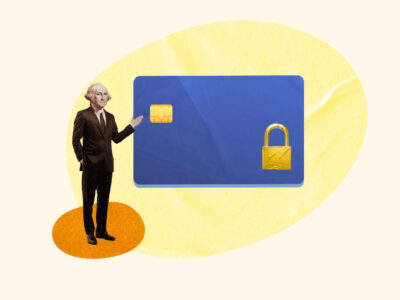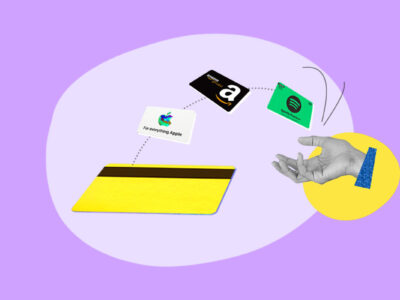Table of Contents
It’s our mission to provide objective ratings for every credit card, free from the influence of affiliates or even our own biases. To that end, we developed multiple credit card rating rubrics that collectively feature over 40 factors and weights and use them to produce a fair rating from 1 to 5 stars for each card. You can view the actual rubrics here.
There are a couple of reasons we make our rubrics available to anyone interested:
- We want to be fully transparent about how a card earns the rating it does.
- We want your feedback about how we can improve our existing rubrics or develop new ones.
You can skip ahead to find out more about getting involved in our rating process, or keep reading to learn about how it works.
Our rubric
When we began creating our rubric, we first divided a credit card’s most important attributes into the primary categories below.
| Category | Explanation |
|---|---|
| Fees | What are the minimum and maximum values for fees on the card, including general usage, foreign transaction, balance transfer, cash advance, and authorized user fees? |
| APR | What are the minimum and maximum values for APR on the card, including purchase, balance transfer, and cash advance? How long is a card’s 0% purchase and/or 0% balance transfer APR periods? |
| Rewards | What are the potential real-dollar earnings for an average user of this credit card? Are the rewards accessible? How valuable is the welcome bonus? |
| Credit Limit | What are the minimum and maximum values for credit limits on the card? |
| Security Deposit | What are the minimum and maximum values for security deposits on the card? |
| Credit Reporting | How many bureaus does this issuer report to? |
| Other | Does the card have other advantages (like a first-year fee waiver or second welcome bonus) or disadvantages (like requiring a bank account with the issuer) that should be taken into account when providing a rating? |
Next, we assigned hard values to each category (e.g., ranges of fees), which lets us rate each card depending on where its values fall. This eliminates bias and pits all cards against each other fairly.
Finally, we assigned weights to all primary categories and subcategories based on the card’s intended audience—for instance, we don’t weight rewards heavily on cards designed for people with bad credit, but we do for people with good credit.
We currently have separate rubrics for:
- Subprime (secured cards)
- Subprime (unsecured cards)
- Prime cards
- Balance transfer cards
Why you can trust our ratings
Every time we rate a card, we enter each attribute into our rubric to generate a final score from 1 to 5 stars.
Our methodology guarantees the following:
- Next to no cards will receive a 5/5 score. To achieve such a high score, a card would have to be extremely consumer-friendly, to the point that the card issuer would likely lose money on it. That’s okay—we believe the issuers should strive to make their cards as consumer-friendly as possible, and we’re comfortable with most (or all) cards falling short of perfection.
- Our credit card ratings are free of bias. Basing our ratings on an objective rubric makes it impossible to fudge numbers in favor or at the expense of a card.
A deeper look at how we think about credit cards
Fees
If a credit card has high fees, it will receive a low score in this category. That doesn’t mean it’s automatically a bad card—plenty of expensive credit cards are worth getting because their rewards far outweigh their fees.
That said, we believe consumers should be able to assess a card’s fees based on their budgets, without considering rewards (since how much you earn depends on how much you spend). That’s why we provide a consistent Fees rating for all cards, regardless of their rewards schemes.
Alternate weights
- Balance transfer cards: For most cards, the most heavily weighted fee is the annual fee. However, we also heavily weigh the cost of the balance transfer fee when we rate balance transfer credit cards. Balance transfer fees are based on a percentage of the balance you transfer, meaning these fees can become exorbitant if you’re consolidating large debts.
APR
One of our biggest scoring factors is the APR on a credit card. Credit card APRs reflect the annual rate of interest that will be charged on:
- Purchases you make and don’t pay off by the due date of a given billing cycle
- Balances you transfer from another credit card
- Funds you withdraw through a cash advance
Sometimes it’s difficult to understand how good or bad a card’s APR is, because the issuer will list it as a range (e.g., 20%–26%). The lower end of the range represents the lowest possible rate that will be offered if you qualify for the card; this rate is reserved for the most “creditworthy” borrowers. The upper end of the range represents the highest rate that may be offered.
Because any borrower can get an APR within the listed range, we consider both the minimum and maximum limits on possible APRs when we calculate our APR rating.
Alternate weights
- Balance transfer cards: Generally, we assign the heaviest weight to each card’s purchase APR, but we add extra weight to the balance transfer APR when reviewing balance transfer credit cards. Most importantly, we heavily weight the length of the 0% APR period, as you’ll ideally use this time to pay off debts consolidated through a balance transfer.
Rewards
Rewards schemes are by far the most complicated and confusing aspects of credit cards for the average consumer to assess. A truly fair estimate would require a person to have intimate knowledge of issuer points or miles schemes, how issuer portals work, and redemption methods (and to do quite a bit of math to figure out how that will translate into actual dollars).
We’ve done our best to simplify things. In our rubric, whether a card’s rewards scheme is worth it boils down to:
- How much the average spender could earn. We developed detailed estimates of average spending for consumers with subprime and prime credit, a necessary step to know if a credit card’s intended audience is likely to spend enough to make a given card worth it. When we rate a card’s earning potential, we do this calculation every time.
- How accessible a card’s rewards are. We assess how easy it is for the average person to earn rewards by spending in the designated rewards categories. For example, a rewards program built on bonus categories like gas and groceries will have an advantage over one that only rewards airfare purchased through the issuer’s travel portal.
- How generous the welcome bonus is. Cards with higher welcome bonuses significantly impact a card’s potential earnings over time. We gauge a welcome bonus’s value against the card’s annual fee (e.g., does it earn 1x the annual fee, 2x, etc).
Credit Limit
For consumers with subprime credit, getting a credit card at all can seem like a challenge—much less one with a relatively high credit limit. While having a high credit limit may seem like a vanity metric, it can be debilitating to have a low limit for two reasons:
- Ease of making big purchases: Cards with a low limit make it hard to make larger purchases, such as airplane tickets.
- Effect on credit score: Cards with a lower limit will more easily lead to high credit utilization rates, which every major credit scoring model penalizes.
For our rubric, we rate each card’s minimum and maximum possible credit limits individually. Overall, the higher both credit limits are, the higher their scores will be.
Security Deposit
For a consumer with a bad credit history, applying for a secured credit card may be the only avenue to getting credit whatsoever. However, to get a card, many consumers need to pay a security deposit that acts as collateral if they don’t pay their bills, and also determines the card’s credit limit.
Issuers usually set a minimum and maximum security deposit amount, and we factor both into our scores. Our reasoning is as follows:
- Consumers shouldn’t be priced out of the card: Having a low minimum security deposit makes it easier for lower-income consumers to apply for the card. The lower the minimum deposit, the better our score.
- Consumers shouldn’t be overly limited: Having a high maximum security deposit allows consumers more flexibility to make big purchases and keep their credit utilization low. The higher the maximum deposit, the better our score.
Credit Reporting
If you’re a responsible credit user, you want to reap the benefits—a strong credit history and a good credit score. We believe it’s essential for a credit card issuer to report to at least two of the main credit bureaus, and preferably to all three. In our rubric, we give increasingly poor ratings to cards that don’t report to all three bureaus. We assign far more weight to this metric on subprime cards, since many cardholders may open them specifically with the goal of building their credit.
Other
Credit cards can frequently come with a dizzying array of benefits or requirements that can be confusing for the average consumer to assess. That’s because the credit card industry is both:
- Competitive: Issuers frequently invent new benefits to entice consumers to apply for their cards.
- Risky: Issuers are in the business of lending money, sometimes to unreliable people. They may invent consumer-unfriendly schemes to protect their interests.
We take into account the various benefits, requirements, and schemes that issuers may have, assign a point total for each, and add or subtract them from each card’s score based on how they affect the average consumer. We apply these bonuses or penalties uniformly across the board to avoid introducing bias.
Examples of negative considerations include:
- The credit card doesn’t offer pre-approval
- You must open a bank account with the issuer to get the credit card
- The credit card’s borrowing terms are not readily available
Examples of positive considerations include:
- The credit card offers free credit scores as a perk
- The credit card has high approval odds despite being available to bad-credit borrowers
- The issuer offers alternative repayment plans (like installment plans to pay off a large purchase)
This is just a small selection of the kinds of factors we account for when rating our cards. Our aim is to give the most comprehensive and unbiased assessment of each card and whether it will meet the needs of the target borrower.
Where you come in
Our credit card rating rubric is a work in progress. Our two main goals are to eliminate bias and to provide ratings that are actually useful to potential cardholders. To achieve these goals, we need insights from real people who can help us perfect our rubric.
If you want to be part of the conversation and help us build the best credit card rating system possible, join us on Discord.
